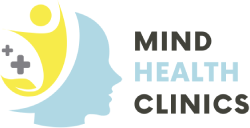What are the features of panic disorder?
Panic disorder is an anxiety disorder marked by recurrent and unexpected panic attacks, which are sudden episodes of intense fear or discomfort that escalate rapidly, usually peaking within minutes. During these attacks, individuals may experience a range of physical symptoms such as heart palpitations, chest pain, shortness of breath, dizziness, sweating, trembling, nausea, and feelings of choking. Psychological symptoms include a sense of impending doom, fear of losing control, going crazy, or even dying. These attacks are often followed by persistent concern or anxiety about having future attacks, and individuals may develop avoidance behaviors, steering clear of situations or places where they fear an attack might occur. For diagnosis, a person experiences multiple unexpected panic attacks and at least one month of ongoing concern about additional attacks or significant behavioral changes related to the attacks. A medical evaluation is also essential to rule out physical conditions, such as heart or thyroid problems, that might mimic the symptoms of a panic attack. Diagnosis should also differentiate panic disorder from other anxiety disorders.
Inquire About This Service
What are the causes and risk factors for panic disorder?
The causes of panic disorder are not fully understood, but it is believed to result from a combination of genetic, biological, psychological, and environmental factors.
Causes:
- Genetic predisposition: A family history of panic disorder or other anxiety disorders can increase the likelihood of developing the condition, suggesting a genetic component.
- Neurobiological factors: Imbalances in brain chemicals, such as serotonin, norepinephrine, and gamma-aminobutyric acid (GABA), which regulate mood and anxiety, may contribute to panic disorder. Dysfunction in the brain’s fear response system, particularly in the amygdala, can also play a role.
- Stressful life events: Traumatic experiences, such as the death of a loved one, abuse, or significant life changes, can trigger the onset of panic disorder in susceptible individuals.
Risk Factors:
- Family history: Having close relatives with panic disorder or other anxiety disorders increases the risk.
- Gender: Women are more likely than men to develop panic disorder.
- Age: Panic disorder often begins in late adolescence or early adulthood, though it can occur at any age.
- Stressful life events: Significant stress, such as major life changes or traumatic experiences, can trigger panic attacks and contribute to the development of panic disorder.
- Temperament: Individuals with a more sensitive or nervous temperament, who tend to experience negative emotions more intensely, may be at higher risk.
- Other mental health disorders: Those with other anxiety disorders, depression, or substance abuse issues may be more prone to developing panic disorder.
While these factors can increase the risk, not everyone with these risk factors will develop panic disorder, and some people may develop the condition without any identifiable risk factors.
What are the treatment options for panic disorder?
- Treatment of panic disorder typically is managed by various forms of counseling and medications. Counseling options may include exposure and response prevention, and cognitive-behavioural therapy. Medications which have been shown effective in treating OCD are: Selective Serotonin Reuptake Inhibitors (SSRIs): These are often the first-line treatment for panic disorder. Examples include sertraline, fluoxetine, paroxetine, and escitalopram. They help regulate serotonin levels in the brain, reducing anxiety and preventing panic attacks.
- Serotonin-Norepinephrine Reuptake Inhibitors (SNRIs): SNRIs, such as venlafaxine and duloxetine, are another class of antidepressants used to treat panic disorder by balancing serotonin and norepinephrine levels.
- Benzodiazepines: These anti-anxiety medications, like alprazolam (Xanax), clonazepam (Klonopin), and lorazepam (Ativan), provide quick relief of panic symptoms but are generally used short-term due to the risk of dependence.
- Tricyclic Antidepressants (TCAs): Medications like imipramine and clomipramine may also be used, though they are less common due to side effects compared to SSRIs and SNRIs.
- Beta-Blockers: Propranolol, a beta-blocker, may be used to manage the physical symptoms of panic attacks, such as rapid heartbeat, though it is not typically the primary treatment.
- Monoamine Oxidase Inhibitors (MAOIs): These are less commonly used due to dietary restrictions and side effects but can be effective in some cases. Examples include phenelzine and tranylcypromine.
It’s important for individuals with panic disroder to work closely with their doctor to determine the most appropriate medication and dosage based on their specific symptoms, treatment history, and individual factors. Additionally, medication should be used as part of a comprehensive treatment plan that may also include psychotherapy, lifestyle modifications, and support from mental health professionals. Regular monitoring and adjustments to the treatment plan may be necessary to achieve optimal outcomes.


